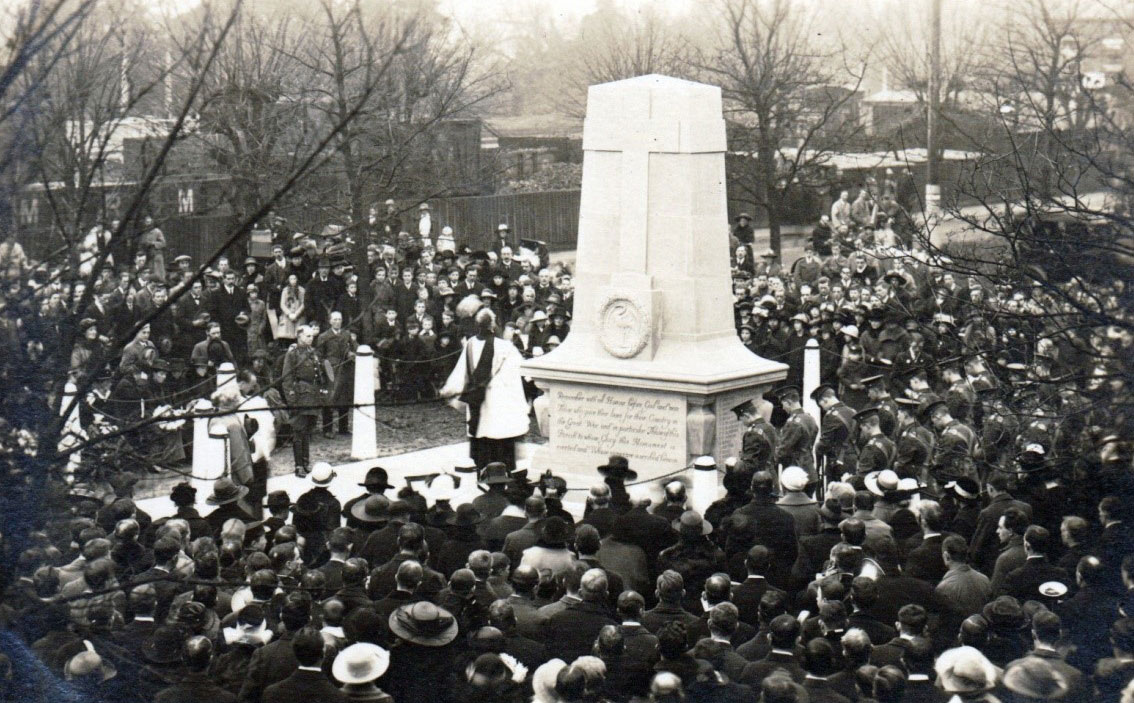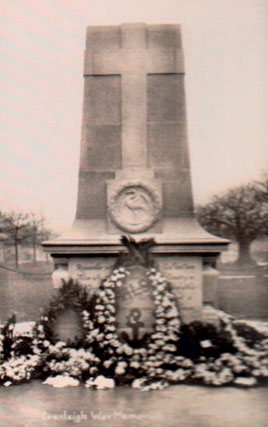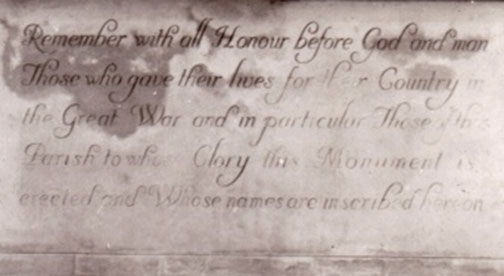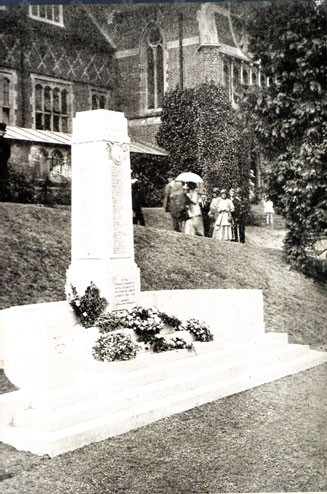
The War Memorial unveiling ceremony (photo by Walter Corin, courtesy of Michael Miller)
During the previous year – 1919 – controversy raged in Cranleigh about the form of a memorial to the village men who had died in the Great War. There were over 200 of them, buried in around 67 different cemeteries in Europe and the Middle East. A committee was set up to plan it, and their proposal was for a memorial in the form of ‘a German gun mounted on a suitable plinth’. Not surprisingly, Cranleigh people did not warm to this idea, and voted against it. The committee came back with a second proposal, this time to have a memorial column. This was an improvement on the German gun, but many were still dissatisfied. The Rector, the Rev. Philip Cunningham, wrote in the Parish Magazine, ‘It seems to many so characterless and so unworthy. I cannot help hoping that some alternative plans may be obtained by the committee to touch our emotions and arouse our enthusiasm. I do trust the last word has not yet been said.’

The permanent Whitehall Cenotaph, unveiled November 11th 1920
In April 1920 yet another public meeting was held in the Village Hall – the old one, in Ewhurst Road – about the War Memorial. It was chaired by Mr Henry Hayman, who had been headmaster of the Village School for the past 40 years. The committee put forward its third proposal, to erect a cenotaph with the names of the Fallen, on the ground opposite the entrance to the railway station. And this time the people of Cranleigh responded with enthusiasm.

Thorpe’s advert of 1922: a very versatile business
The welcome for this proposal may have been because the design was similar to the Whitehall Cenotaph, designed by Edwin Lutyens, which had been an immediate success. It was originally put up as a temporary structure made of wood and plaster for the Peace Day celebrations of 1919. People acclaimed it as a dignified and appropriate memorial, and a permanent version of it was made in Portland stone. Cranleigh’s cenotaph was designed by the London firm of Waterhouse, and when this was approved, it was made by local builders, H.F. Thorpe, also in Portland stone.

War Memorial, 1920 (courtesy of Michael Miller)
Sir Gerald Chadwyck-Healey, of Wyphurst (where St Joseph’s Special School in Amlets Lane is now), paid £74 for the architect’s design, and the £750 for building the memorial was raised by public subscription. The big landowners living around Cranleigh were the main contributors, giving sums of between £50 and £100. Military people, and professionals in the law, medicine, education and the churches tended to give between one and five guineas (£5 5s). Shopkeepers mostly gave at the one guinea level, though those who had lost family members often gave more. Then there were many small gifts (some anonymous) of half-a-crown (2s 6d) or 5s.

The original wording on the front of the War Memorial
Notices were put up all over the village announcing that the memorial would be unveiled on Sunday December 5th 1920 on the Common. (Did the makers just miss the November 11th anniversary?) The Parish Magazine reported that ‘a very large concourse of people’ gathered. Those who took part in the unveiling and dedication were within the site of the memorial. Outside the site were representatives of the bereaved families. Around them, ex-servicemen formed a cordon. Outside this, was the general public.

The Cranleigh School war memorial, unveiled in July 1921, bore 133 names, but 3 were later found not to be Old Cranleighans, while many genuine OCs were omitted (M. Williamson, Cranleigh: 1st 150 Years)
The new memorial was covered by a Union Jack. The hymn, ‘O God our help in ages past’, was sung, followed by the Lord’s Prayer. Brigadier-General C.E. Corkran CB CMG spoke, and unveiled the memorial. The Rector dedicated it. Then a firing party from the Coldstream Guards fired over it, and the Last Post and Reveille were sounded by two buglers of the Queen’s (West Surrey) Regiment, and the Cranleigh band played ‘God save the King’. Wreaths were placed by the bereaved, by ex-servicemen, and by the general public. It must have been a moving occasion.

Memorial plaque at the Baptist church
The photo of the memorial shows that the writing on the lower part was originally different from today. This is because, after the Second World War, the names of Cranleigh men who died then replaced the original inscription.
Other memorials were put up by the parish church, the Baptist church and Cranleigh School, evidence of the profound impact of the ‘Great War’ on the British people.
The Cranleigh History Society plans to resume its monthly meetings as soon as the Covid regulations permit.











